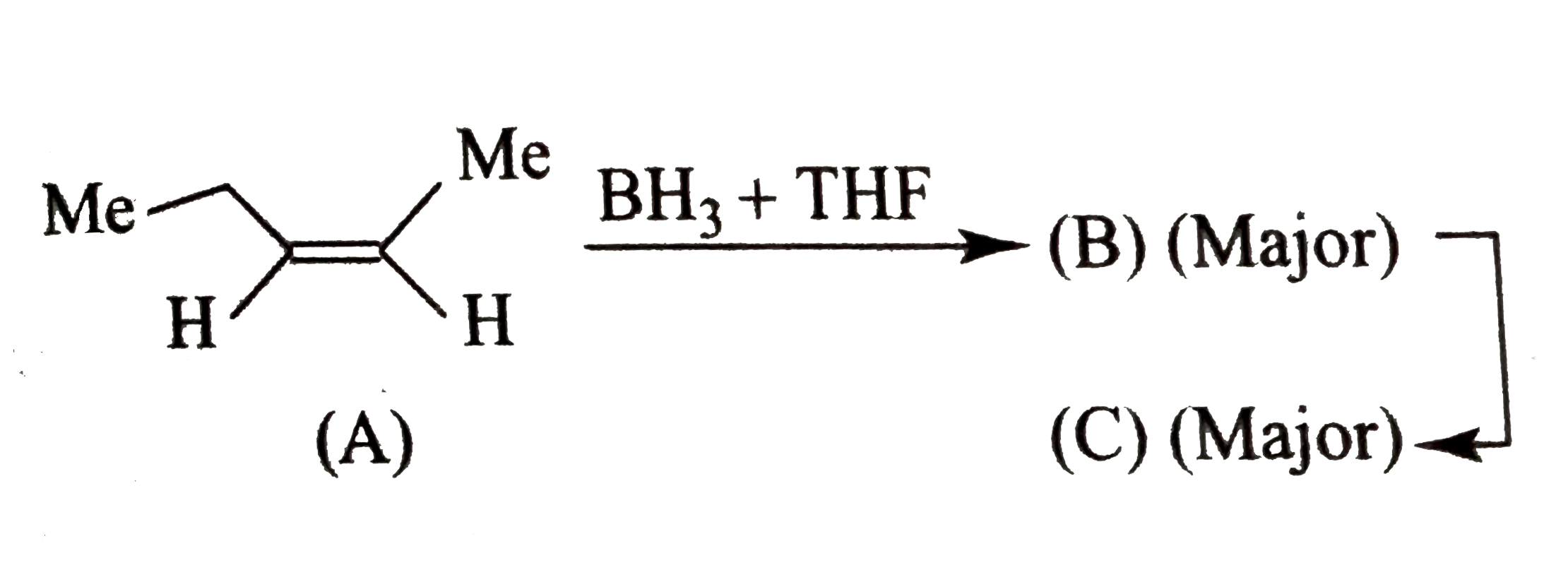Give the stability of the following resonance structures
(a)
(b)
(c )
(d) .
Video Solution
Text Solution
(i) The lesser the charge separation, the more stable the resonating structure. and have less charge separation. But in , charge is on electropositive atom. Therefore, is more stable than . Since both have six convalent bonds, so more stable than .
(ii) Both and have five convalent bonds, but is more stable than because in positive charge is on electropositive atom and negative charge is on (electronegative) atom, whereas in its is reversed.
Therefore ,
So, the stability order is : .
|
Topper's Solved these Questions
- GENERAL ORGANIC CHEMISTRYBOOK - CENGAGE CHEMISTRY ENGLISHCHAPTER - GENERAL ORGANIC CHEMISTRYEXERCISE - Subjective
11 Videos
- GENERAL ORGANIC CHEMISTRYBOOK - CENGAGE CHEMISTRY ENGLISHCHAPTER - GENERAL ORGANIC CHEMISTRYEXERCISE - Concept
17 Videos
- GENERAL ORGANIC CHEMISTRYBOOK - CENGAGE CHEMISTRY ENGLISHCHAPTER - GENERAL ORGANIC CHEMISTRYEXERCISE - Analytical and Descriptive
1 Videos
- CLASSIFICATION AND NOMENCLATURE OF ORGANIC COMPOUNDSBOOK - CENGAGE CHEMISTRY ENGLISHCHAPTER - CLASSIFICATION AND NOMENCLATURE OF ORGANIC COMPOUNDSEXERCISE - Analytical and Descriptive Type
3 Videos
- HYDROGEN, WATER AND HYDROGEN PEROXIDEBOOK - CENGAGE CHEMISTRY ENGLISHCHAPTER - HYDROGEN, WATER AND HYDROGEN PEROXIDEEXERCISE - Subjective Archive (Subjective)
3 Videos
Similar Questions
Knowledge Check
The correct stability order of the following resonance structures is :
H2C=⊕N=өN(I) H2⊕C−N≡өN(II) H2өC−⊕N≡N(III) H2өC−N=⊕N(IV)AI>II>IV>IIIBI>III>II>IVCII>I>III>IVDIII>I>IV>IIAn unknown alkene (A) reacts with 3 mole of H2 gas in presence of platinum catalyst to form 1-isopropyl-4-methyl cyclohexane. When unknown alkene (A) is ozonized and reduced, following product are obtained
H−O∣∣C−H H−O∣∣C−CH2−O∣∣−O∣∣C−CH3, CH3−O∣∣C−CH2−O∣∣C−H
The alkene (A) is :A B
B C
C D
D
Arrange the following resonating structures in order of increasing stability
CH2=+N=−N(I) H2+C=N=−N(II) H2−C−+N≡N(III) H2−C−N=+N(IV)
View SolutionCorrect order of stability of the following resonating structure is
CH2=CH(a)−O∣∣C−H↔ΘCH2−CH(b)=ΘO∣C−H↔Θ⋅⋅CH2−CH(c)=⊕O∣C−H
View SolutionIdentify the most stable species in the following set of ions giving reasons
(a) +CH3,+CH2Br,+CHBr2,+CBr3 (b) ΘCH3,ΘCH2Cl,ΘCHCl2,ΘCCl3
View SolutionGive the IUPAC name of the following organic compounds:
H−H∣C∣H−O∣∣C−H
View Solution H2O2+ΘOH
H2O2+ΘOH
B and C are:
View SolutionWrite the names of the monomers of the following polymers:
⎡⎢ ⎢⎣−−NH∣N−(CH2)6−H∣N−O∣∣C−(CH2)4−O∣∣C−−⎤⎥ ⎥⎦n
View Solution
